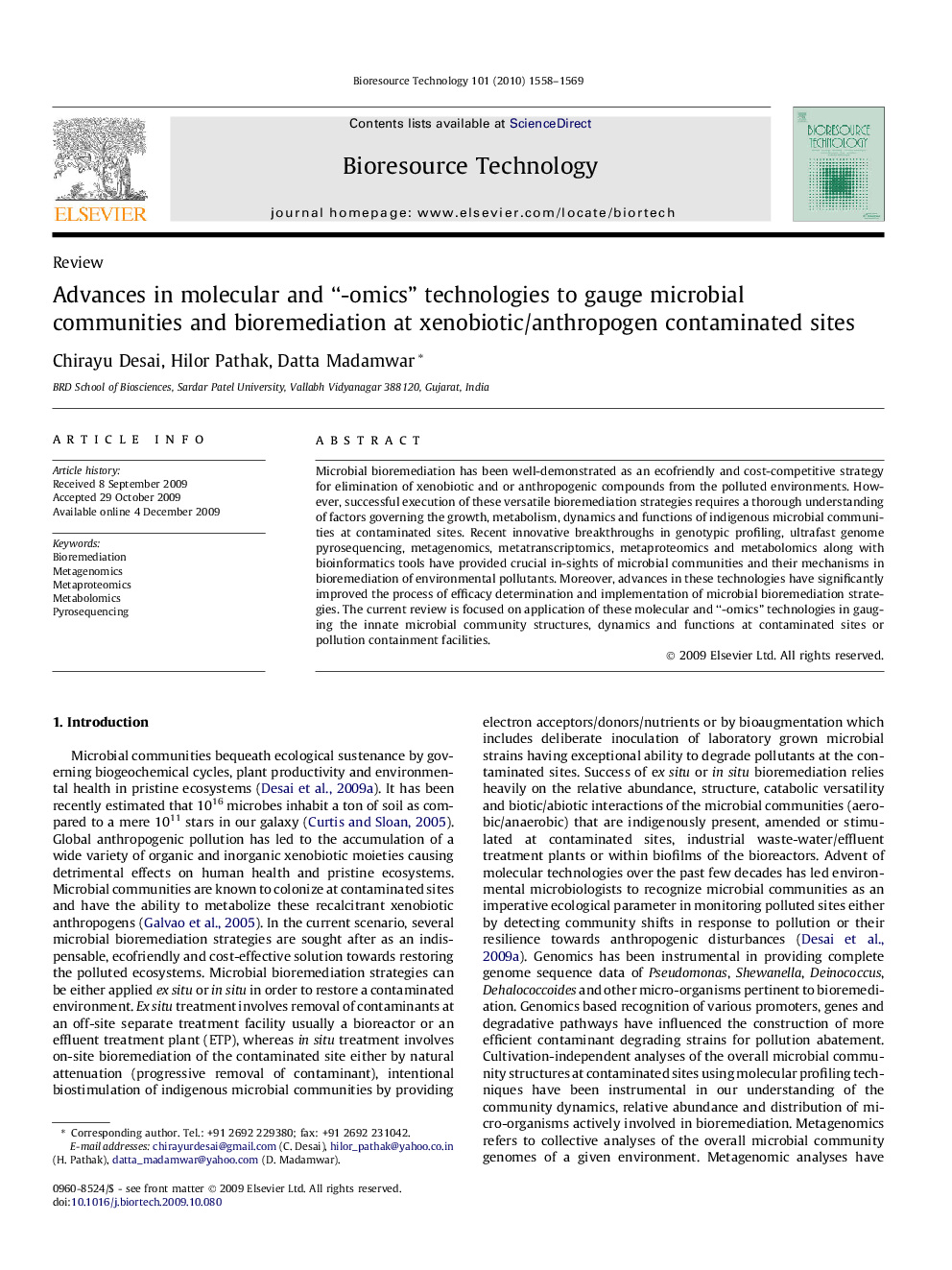| کد مقاله | کد نشریه | سال انتشار | مقاله انگلیسی | نسخه تمام متن |
|---|---|---|---|---|
| 682725 | 888990 | 2010 | 12 صفحه PDF | دانلود رایگان |

Microbial bioremediation has been well-demonstrated as an ecofriendly and cost-competitive strategy for elimination of xenobiotic and or anthropogenic compounds from the polluted environments. However, successful execution of these versatile bioremediation strategies requires a thorough understanding of factors governing the growth, metabolism, dynamics and functions of indigenous microbial communities at contaminated sites. Recent innovative breakthroughs in genotypic profiling, ultrafast genome pyrosequencing, metagenomics, metatranscriptomics, metaproteomics and metabolomics along with bioinformatics tools have provided crucial in-sights of microbial communities and their mechanisms in bioremediation of environmental pollutants. Moreover, advances in these technologies have significantly improved the process of efficacy determination and implementation of microbial bioremediation strategies. The current review is focused on application of these molecular and “-omics” technologies in gauging the innate microbial community structures, dynamics and functions at contaminated sites or pollution containment facilities.
Journal: Bioresource Technology - Volume 101, Issue 6, March 2010, Pages 1558–1569